The stock market continued its decline this quarter, selling off another four percent since the end of June. As of September 30th, the S&P 500 was down 24.8% for the year. This puts stocks well into bear market territory which is defined as a 20% drop. Stocks were able to stage a rally midway through the quarter, cutting their losses in half, but ultimately succumbed to higher interest rates and the fear of the Fed having to throw the economy into a deepening recession to tame inflation.
The Federal Reserve’s fight against inflation is basically dictating everything in the financial markets right now. This is because despite the aggressive shift in monetary policy, raising the fed funds rate five times from a target of 0.25% to 3.25%, inflation remains at a forty year high and has shown no sign of budging. The question on everyone’s mind is how far will the Fed have to go to get this under control? Interest rates across the entire yield curve have increased more than two and a half times this year and continue to be the primary driver of the stock market’s decline.
This is not to say that rates must come down for stocks to rebound. What the stock market is looking for is more certainty in the economic outlook next year. It’s important to remember that the stock market’s moves today reflect investor’s expectations of the health of the economy maybe a year from now. Less clarity on that leads to higher volatility. At the moment, we live in very uncertain and pessimistic times. Thus, it’s not hard to see why the market is down this year.
We believe the turning point for equities will be when the data shows inflation coming down and thus the Fed can take its foot off the brakes. But this will take several months of data to show a trend strong enough to convince investors we’ve turned the corner. Therefore, it’s unlikely we’ll see a meaningful rebound this year. In fact, as of this writing, the September CPI numbers were just released and that was the seventh month above eight percent.
CPI for All Urban Consumers
As we had mentioned in our last commentary, the silver lining in all this is that income investors are now able to get a reasonable return on their investments. Corporate bond yields with good credit ratings are now in the mid five percent range and headed towards six percent. These yields represent a real value not seen since before the financial crisis and are giving much needed relief to retirees living off their savings. Furthermore, the Social Security Administration has just announced that next year’s cost of living increase will be 8.7%. That is the highest COLA increase since 1981.
These higher cash flows directly relate to the amount of money a person needs to retire on and the math is pretty straightforward. Heading into this year, these same bonds yielded less than two percent. At two percent, an investor who needed $100k in income would need a five million dollar portfolio to generate that income. At six percent, one could generate $100k with less than 1.7 million dollars. So, it’s always important to keep a perspective on what your goals are as an investor.
We don’t think growth investors, those heavily invested in the stock market, need to worry about this as long as their time horizon is sufficiently long enough. Bear market declines are fairly routine and we don’t see anything especially different about this one. Even if this were to last well into next year, the stock market is the best place for real returns (returns in excess of inflation). That is especially true if inflation remains elevated for a number of years.




